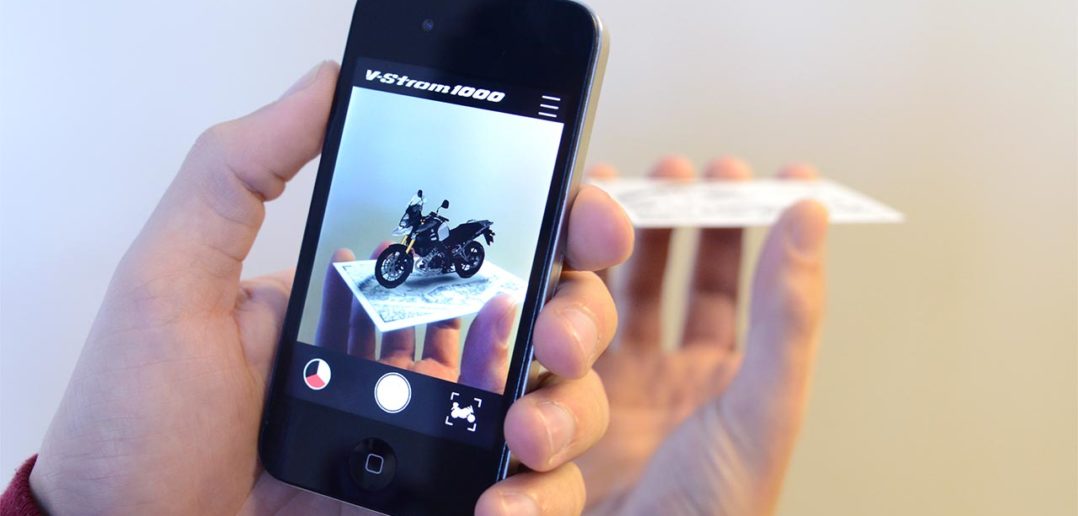Why Now is the Best Time to Make an Augmented Reality Application, and How to Do It.
Ten years ago, the tech industry and video game developers were ecstatic about the opportunities advances in technology were creating for virtual reality. However, as we hurtle into the 21st century proper, more and more developers are turning their backs on virtual reality for a new and exciting approach to perception: Augmented Reality. Developers are not the only ones turning to Augmented Reality. Harvard Business Review recently had a major segment authored by the famed Harvard Business School Professor Michael Porter, which had shown great support for Augmented Reality for the enterprise – proclaiming that every business needs an augmented reality strategy.
Augmented Reality is the enhancement or alteration of a real-world environment through a computer. Rather than creating an entirely simulated world, the costly and difficult process necessary for virtual reality, augmented reality takes the data already existent in the user’s environment and lets the user interact with it in new ways.
Augmented Reality already has a range of uses, from NASA flight displays that outline runways and landing zones for pilots, to video games, to that little dancing hotdog on Snapchat that stormed the internet this Halloween. Due to the wide range of opportunities in a variety of industries, many tech engineers, and top app developers have already begun exploring Augmented Reality technologies.
One of the most well-known augmented reality app development companies in 2017 is Niantic, inc. This augmented reality company might not sound familiar, but one of their products certainly will. Their app, released in 2016, has been downloaded over 500 million times worldwide and quickly became one of the most used and profitable mobile apps of the year. Pokémon GO. Of course, mobile games are only one of the applications of augmented reality. Augmented reality technology companies are already working to create AR platforms for various industries such as tourism, military, medical, advertising, education, and entertainment.
This may all sound like science-fiction, but there are already many AR products in use, and many more augmented reality technology companies are developing new tools for AR use as you read this. One of the most high-profile AR tools with a strong financial and popular backing is Google Glass. Google Glass will allow users to interact with an AR display at the touch of a button or with a simple voice command, all within a simple pair of glasses.
One of the primary benefits of Augmented Reality over Virtual reality is simply cost. Since their first iterations, computers have always been better able to analyze and manipulate data more effectively than create it. AR Application developers can create a completely customized app for enterprise clients at upwards of $300k. But what if you’re a smaller company simply looking to develop a stand-alone AR application? If this is the case, you can expect a custom software development company to create an app for anywhere from $70,000-$200,000. Some services will even offer basic AR-ready website pages for under a $100 per page.
However, if you’re looking to do very basic experimentation for non-business purposes or cut expenses, augmented reality app development costs can be reduced by using DIY-development tools. There is a plethora of AR app development software at the disposal of any entrepreneurs looking to enter the field. Many of the top iPhone and Android app development companies are already looking at AR to provide new opportunities. Not deaf to the clamoring market, both major US smartphone software companies have created their own software for AR application developers. Apple released their own ARKit last September, a toolkit for creating augmented reality apps, and hundreds of developers are already experimenting with it. ARKit makes it easy to create fun and simple-to-use AR applications. Apple’s iPhone X back to 6 have ARKit and demos and lines of code to copy exist in the active online community. Now is an excellent time to start creating applications for and with this software, so that your app will be well-established by the time consumers begin developing their own apps. For more information on Apple devices and augmented reality, check out their WWDC announcement.
Google, in response, has released their own augmented reality kit titled ARCore. Similar to ARKit, ARCore will allow Android phone users to create and use augmented reality applications right from their phone. One of the most useful features of having a toolkit is that developers no longer need to create their own coding to operate functionally on platforms. Instead, both ARCore and ARKit will have a “library” of pre-built code for quick and efficient adaptation to usable, and more importantly sellable, applications. According to Google, ARCore is ready to roll out immediately onto most modern Android devices, but is currently available on the Pixels and Galaxy S8.
With Google and Apple jumping onboard, augmented reality is shaping up to be the next big mobile device feature, and top app development companies are taking notice. A typical augmented reality developer salary runs from $100,000-250,000. There is a reason these software engineers are being paid so well. Custom software development companies involved in AR are receiving more business than ever. Pokémon GO was just the beginning of a larger trend that continues to skyrocket both technologically and financially.
How do you get involved in augmented reality mobile app development, and how do you use it to create a “million dollar app?” Well, the first step would be to get in contact with a company or a team to get the ball rolling. Our team at Venture Aviator has the knowledge and expertise to take your augmented reality idea from a thought to a marketable application. The next step is to find a software developer you can trust to make your app useful and aesthetically pleasing. Finally, you need to get the project and development going. In order to build a successful Augmented Reality app, you need to make your app so well-constructed and seamless that even “your grandmother can use it”. The difference between million-dollar apps and everyone else has been shown again and again to be attention to detail and great UI/UX.
With the wide variety of software development options at your disposal, there is no longer any excuse to wait to turn your idea into a profitable and useful augmented reality app. The next Pokémon GO-type success is just waiting to be developed and funded, and the sooner you invest in this new technology, the greater the payoff will be.
Click here to tell us about your project
Related Post: 5 Things You Need to Know About Chatbots
Related Post: 5 Ways a CTO can Accelerate Business with AI









Leave A Comment